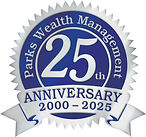
Our Services
Weekly Perspective
November 24, 2025
‘Tis the season!
The holiday shopping season gets underway this week, and expectations are high. The National Retail Federation (NRF) looks at a bunch of economic factors – consumer spending, disposable personal income, employment, wages, inflation, and monthly retail sales – to estimate how much people will spend over the winter holidays. This year, the forecast suggests sales will top $1 trillion.
“American consumers may be cautious in sentiment yet remain fundamentally strong and continue to drive U.S. economic activity…We remain bullish about the holiday shopping season and expect that consumers will continue to seek savings in nonessential categories to be able to spend on gifts for loved ones,” explained NRF President and CEO Matthew Shay.
The gift shift
The Currency reported on a recent survey, called the Going Rate, that explored how Americans think about gift giving and spending. When responses were tallied, it found that:
86 percent Believe gifts can be meaningful without being expensive.
75 percent Expect gifts will be more expensive this year because of tariffs and inflation.
60 percent Think gift culture has gotten “out of hand”.
58 percent Have a gift budget.
56 percent Buy gifts throughout the year to spread out the cost.
48 percent Experience gift fatigue.
33 percent Are adopting no-gift policies.
Fifty-five percent of millennials, 50 percent of Gen Z, and 28 percent of baby boomers would rather give the gift of time and shared experience. They believe their presence is the real gift. Respondents who plan to give gifts expect to spend about $64 per person, on average.
Securities offered through LPL Financial, Member FINRA/SIPC. Investment advice offered through Private Advisor Group, a registered investment advisor. Private Advisor Group and Parks Wealth Management are separate entities from LPL Financial.
* Government bonds and Treasury Bills are guaranteed by the U.S. government as to the timely payment of principal and interest and, if held to maturity, offer a fixed rate of return and fixed principal value. However, the value of fund shares is not guaranteed and will fluctuate.
* Corporate bonds are considered higher risk than government bonds but normally offer a higher yield and are subject to market, interest rate, and credit risk as well as additional risks based on the quality of issuer coupon rate, price, yield, maturity, and redemption features.
* The Standard & Poor's 500 (S&P 500) is an unmanaged group of securities considered to be representative of the stock market in general. You cannot invest directly in this index.
* All indexes referenced are unmanaged. The volatility of indexes could be materially different from that of a client’s portfolio. Unmanaged index returns do not reflect fees, expenses, or sales charges. Index performance is not indicative of the performance of any investment. You cannot invest directly in an index.
* The Dow Jones Global ex-U.S. Index covers approximately 95% of the market capitalization of the 45 developed and emerging countries included in the Index.
* The 10-year Treasury Note represents debt owed by the United States Treasury to the public. Since the U.S. Government is seen as a risk-free borrower, investors use the 10-year Treasury Note as a benchmark for the long-term bond market.
* Gold represents the afternoon gold price as reported by the London Bullion Market Association. The gold price is set twice daily by the London Gold Fixing Company at 10:30 and 15:00 and is expressed in U.S. dollars per fine troy ounce.
* The Bloomberg Commodity Index is designed to be a highly liquid and diversified benchmark for the commodity futures market. The Index is composed of futures contracts on 19 physical commodities and was launched on July 14, 1998.
* The DJ Equity All REIT Total Return Index measures the total return performance of the equity subcategory of the Real Estate Investment Trust (REIT) industry as calculated by Dow Jones.
* The Dow Jones Industrial Average (DJIA), commonly known as “The Dow,” is an index representing 30 stock of companies maintained and reviewed by the editors of The Wall Street Journal.
* The NASDAQ Composite is an unmanaged index of securities traded on the NASDAQ system.
* International investing involves special risks such as currency fluctuation and political instability and may not be suitable for all investors. These risks are often heightened for investments in emerging markets.
* Yahoo! Finance is the source for any reference to the performance of an index between two specific periods.
* Opinions expressed are subject to change without notice and are not intended as investment advice or to predict future performance.
* Economic forecasts set forth may not develop as predicted and there can be no guarantee that strategies promoted will be successful.
* Past performance does not guarantee future results. Investing involves risk, including loss of principal.
* The foregoing information has been obtained from sources considered to be reliable, but we do not guarantee it is accurate or complete.
* There is no guarantee a diversified portfolio will enhance overall returns or outperform a non-diversified portfolio. Diversification does not protect against market risk.
* Asset allocation does not ensure a profit or protect against a loss.
* Consult your financial professional before making any investment decision.
* This is not intended to be a substitute for specific individualized tax advice. We suggest you discuss your specific tax issues with a qualified tax advisor.
* These views are those of Carson Coaching, and not the presenting Representative, the Representative’s Broker/Dealer, or Registered Investment Advisor, and should not be construed as investment advice.
* This newsletter was prepared by Carson Coaching. Carson Coaching is not affiliated with the named firm.
Sources:
https://www.bloomberg.com/news/newsletters/2025-11-21/investors-angst-goes-far-beyond-ai-and-nvidia? or go to https://resources.carsongroup.com/hubfs/WMC-Source/2025/11-24-25-Bloomberg-Investors-Angst%20-%201.pdf
https://advantage.factset.com/hubfs/Website/Resources%20Section/Research%20Desk/Earnings%20Insight/EarningsInsight_112125.pdf or go to https://resources.carsongroup.com/hubfs/WMC-Source/2025/11-24-25-Factset-Earnings-Insight%20-%202.pdf
https://www.barrons.com/market-data?mod=BOL_TOPNAV or go to https://resources.carsongroup.com/hubfs/WMC-Source/2025/11-24-25-Barrons-DJIA-S&P-Nasdaq%20-%205.pdf
https://www.empower.com/the-currency/money/going-rate-research
https://www.today.com/life/holidays/christmas-vacation-quotes-rcna48344
